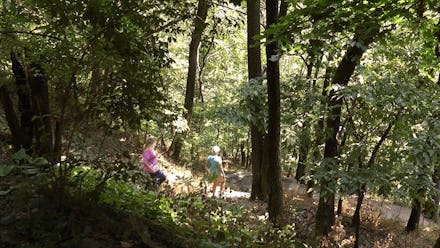New Mountain Valley pipeline threatens stretch of the Appalachian Trail

Standing Rock protesters shifting their focus to a new cause might look West Virginia, where the Mountain Valley Pipeline threatens a swath of the Appalachian Trail and surrounding forest.
According to the Wilderness Society, the pipeline's proposed route would stretch about 300 miles, transporting natural gas from northwest West Virginia to southern Virginia. It would also cut across 3.4 miles of the Jefferson National Forest and require the clearing of a 125-foot-wide land corridor that should be protected under 2001's Roadless Rule, which guards against construction and road-building on 58.5 million acres of National Forest System land.
Opponents have voiced concern for the immediate environment and its wildlife, and also for the precedent the pipeline's construction might set in allowing logging and energy companies to build in areas that are technically off-limits.
The MVP would also disrupt one of the country's most popular hiking trails, the Appalachian Trail. According to the Wilderness Society, 3 million people hike along the celebrated trail a year. The conservation organization questioned whether another pipeline was even necessary, citing a report from September 2016 that concluded the region didn't need new pipelines to satisfy regional energy demands.
According to the Huffington Post, the possibility of a pipeline explosion presents a danger to locals who find themselves within its 1,115-foot "blast radius." Some residents are also worried about the landscape the pipeline will interrupt: The region's karst landscape, characterized by natural underground drainage systems like caves and sinkholes, could lead to polluted groundwater.
"It's being built on a powder keg," as 85-year-old George Lee Jones, of Salem, Virginia, told the Roanoke Times.
Concerns raised by the MVP recall those held by protesters of the Dakota Access pipeline, who recently posted a victory the Standing Rock Sioux Reservation in North Dakota, when the U.S. Army Corps of Engineers effectively halted construction. DAPL would have crossed four states, disturbing sacred tribal lands and threatening to contaminate the Missouri River's water supply.
Shortly after construction stopped, a spill on the neighboring Belle Fourche pipeline dumped nearly 200,000 gallons of crude oil into a creek, proving Standing Rock protesters' point about the potential for pollution.
In September, the Federal Energy Regulatory Commission published a tome of an environmental impact statement on the MVP, concluding that its construction "would result in limited adverse environmental impacts, with the exceptions of impacts on forest," the Roanoke Times reported. Conservationist groups complained that the draft was riddled with errors, criticizing the FERC for failing to look critically at the information the construction company provided.
The public has until Thursday to offer the FERC feedback on the pipeline. Considering that the incoming Trump administration is quite friendly to pipelines and the oil industry, the environmentally minded would do well to air their grievances quickly.